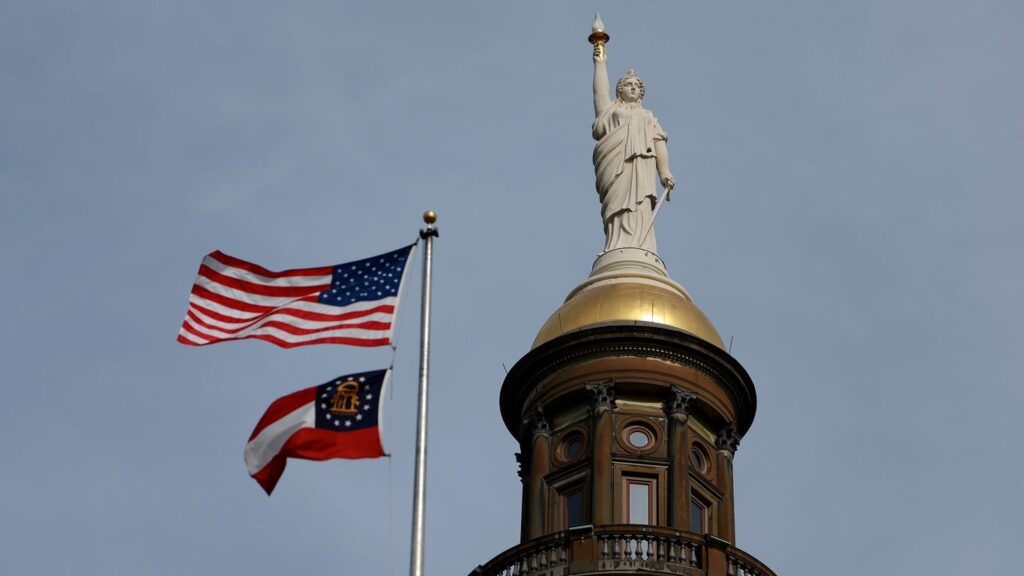Arguably the most prominent statue at the Georgia Capitol is “Miss Freedom” who sits atop the cupola. But she’s not a real woman — rather a 19th-century stock statue.
- In reality, in a state Capitol adorned with roughly 130 portraits, statues and busts of Georgia historical figures, just 13 are of real women.
Why it matters: More than half of Georgia’s population is female. About one-third of elected state lawmakers are women this year.
State of play: Of the 13 statues, only one is a full-body statue — of Elizabeth Brown, the wife of Civil War-era Gov. Joseph E. Brown with her husband.
- Three of the eight portraits on display are also of Georgia first ladies with their husbands.
- Just two of the 13 are Black.
- “There’s this huge deficit [of women] in the building that represents the history of the state,” Georgia State University historian and author of a history of the Capitol Timothy Crimmins told Axios.
What’s happening: Other women at the Capitol include a fountain featuring Mary Latimer McLendon, a women’s suffrage leader (albeit only for white women) and busts of Girl Scouts founder Juliette Gordon Low, author Margaret Mitchell and Moina Belle Michael, who came up with the idea of selling poppies on behalf of World War I veterans.
- All statues and busts are of white women.
- Of the eight women in portraits, only two are Black: Grace Towns Hamilton, the first Black woman elected to the state legislature and Lucy Craft Laney, who founded the first school for Black children in Augusta in 1883.
How it works: Crimmins said adding portraits and statues is a matter of political will and raising money. Both the governor and the legislature can alter the collection, though governors automatically get portraits when they leave office.
- For example, former Gov. Jimmy Carter established a commission in 1973 to select the first portraits of Black Georgians added to the building, including of Martin Luther King, Jr. and Lucy Craft Laney.
- But statues, Crimmins said, are more difficult,…
Read the full article here





